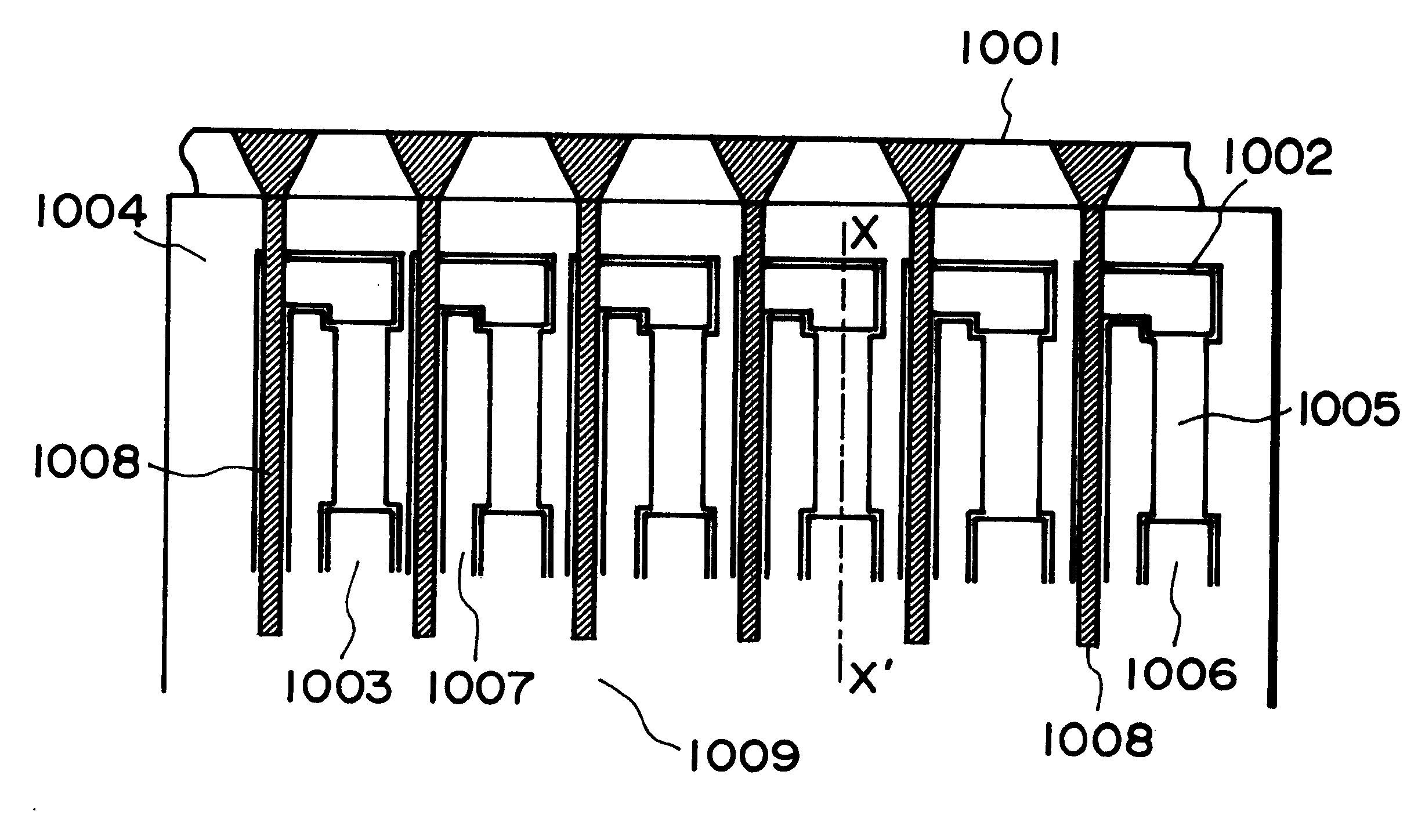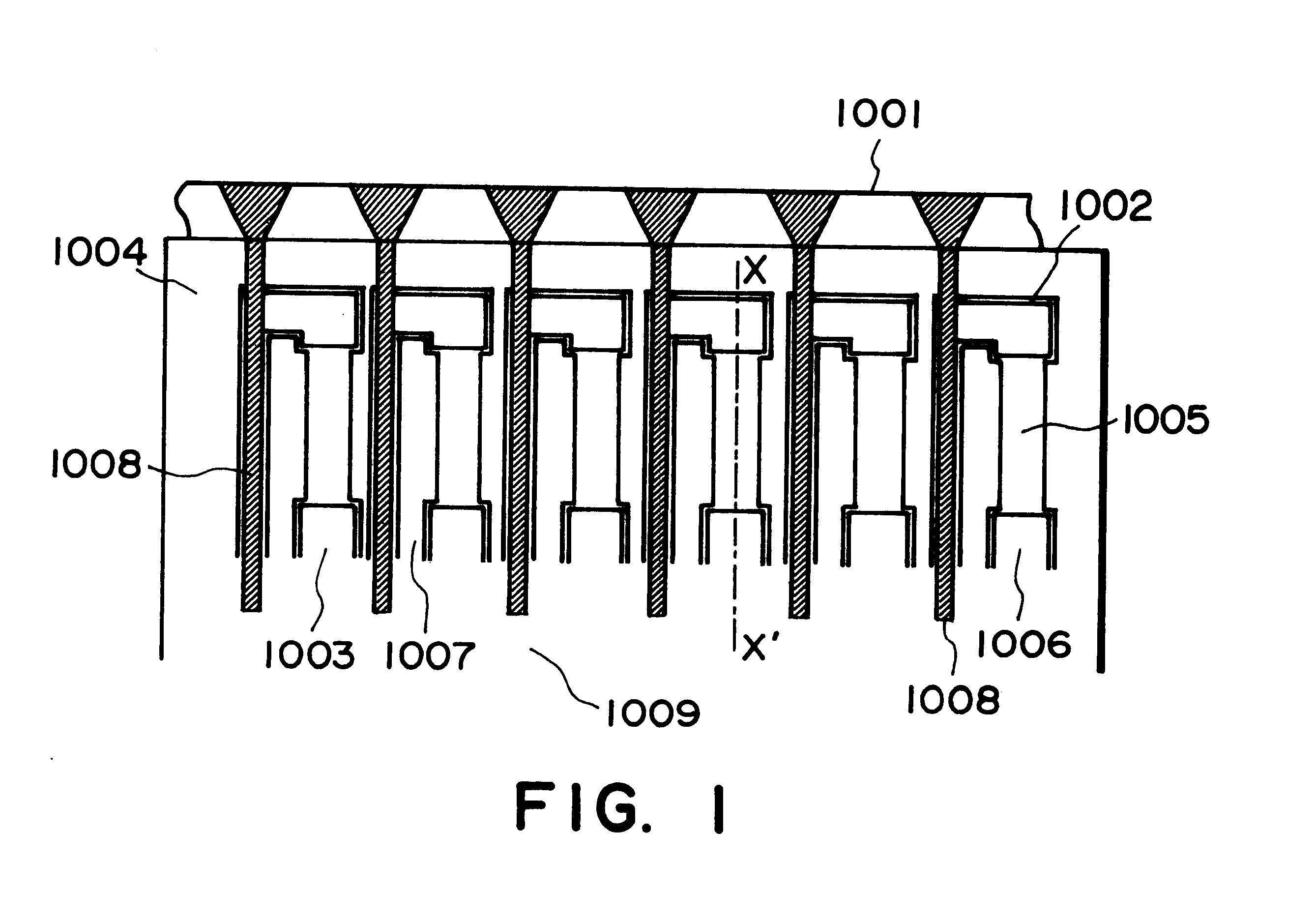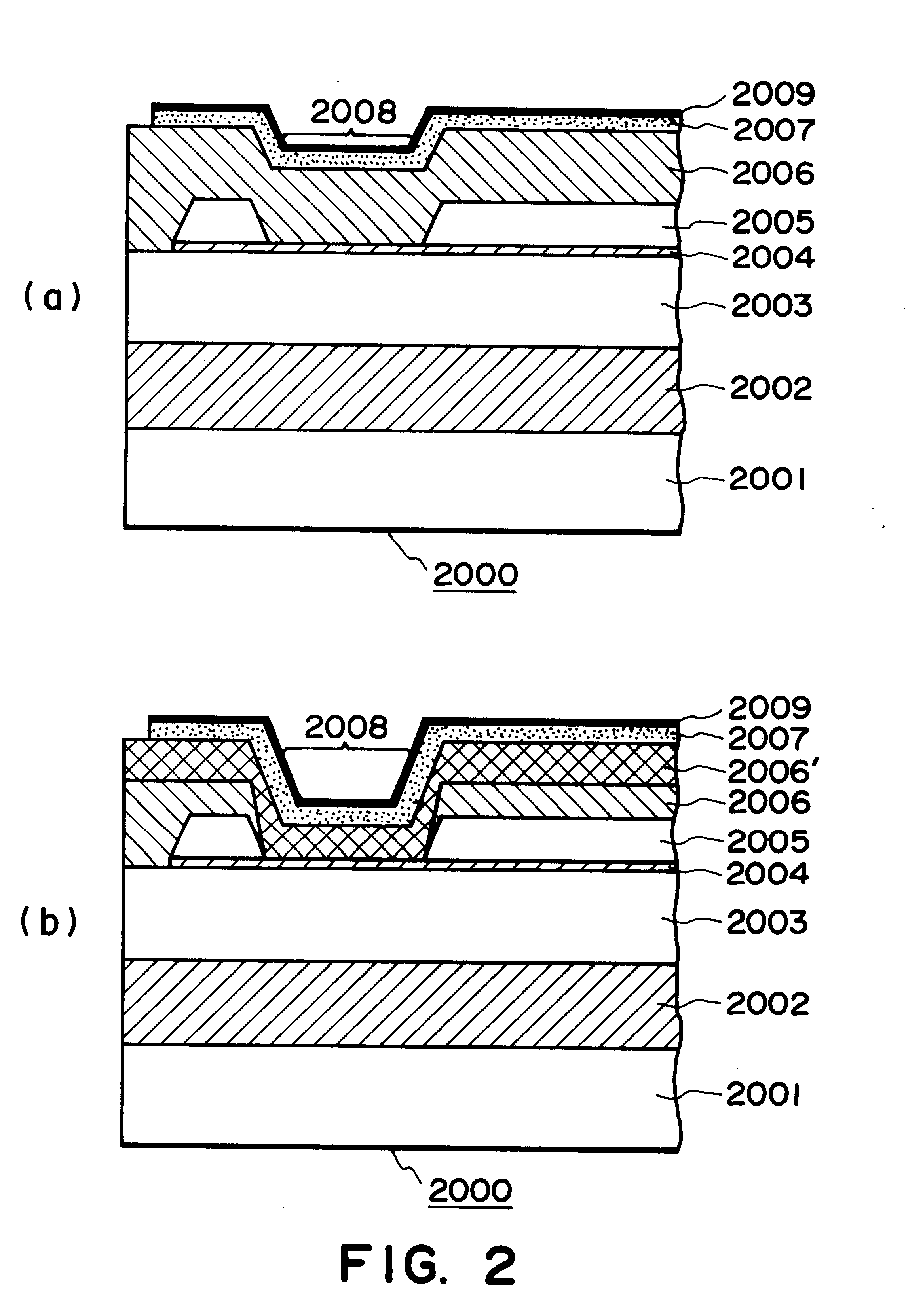Ink-jet head base board, ink-jet head, and ink-jet apparatus
a technology of inkjet head and inkjet head, which is applied in the field of inkjet head base board, inkjet head and inkjet apparatus, which can solve the problems of chemically affecting the ink itself, the proportion and the intense heat of the inkjet head
- Summary
- Abstract
- Description
- Claims
- Application Information
AI Technical Summary
Benefits of technology
Problems solved by technology
Method used
Image
Examples
example 1
Film Formation Example 1
In the following tests, an amorphous alloy film layer equivalent to the top portion protecting layer was formed on a piece of silicon wafer using the apparatus illustrated in FIG. 4, along with the above described film forming method. Then, the properties of the formed amorphous alloy film were evaluated. The description of the film forming operation, and the results of the evaluation of the formed amorphous alloy film will be given below.
Film Forming Operation
First, the surface of a single crystal silicon wafer is thermally oxidized, and this silicon wafer (substrate 4004) was placed on the substrate holder 4003 in the film formation chamber 4009 of the apparatus illustrated in FIG. 4. Next, the interior of the film formation chamber 4009 was evacuated to a level of 8.times.10.sup.-6 Pa by a vacuum pump 4007. Thereafter, argon gas was introduced into the film formation chamber 4009 through the gas introduction opening 4010, and the ambience condition within ...
embodiment 1
Evaluation of Suitability of Film Samples as Top Portion Protecting Layer of Ink-jet
The substrate of the samples evaluated to determine the characteristics of the ink-jet in this embodiment was a piece of plane Si substrate, or a piece of Si substrate on which a driver IC had been already built in. In the case of the plane Si substrate, the heat storage layer 2002 (FIG. 2(b)), that is, a 1.8 .mu.m thick layer of SiO.sub.2, was formed thereon by such a method as thermal oxidization, sputtering, CVD, or the like. In the case of the Si substrate with the IC, the heat storage layer, or the SiO.sub.2 layer, was formed similarly to the case of the Plane Si substrate, during its manufacturing process.
Next, an interlayer insulative film 2003, that is, a 1.2 .mu.m thick film of SiO.sub.2, was formed by sputtering, CVD, or the like methods. Next, the exothermic resistant layer 2004, that is, a 500 nm thick Ta.sub.35 Si.sub.22 N.sub.43 alloy layer, was formed by a method of reactive sputtering...
embodiments 2-5
Ink-jet heads, which were identical to those in the first embodiment except that the top portion protecting layers 2007 were given the compositions and thicknesses shown in Table 2, were produced, and were tested for endurance like those in the first embodiment. The results are given in Table 2.
PUM
 Login to View More
Login to View More Abstract
Description
Claims
Application Information
 Login to View More
Login to View More - R&D
- Intellectual Property
- Life Sciences
- Materials
- Tech Scout
- Unparalleled Data Quality
- Higher Quality Content
- 60% Fewer Hallucinations
Browse by: Latest US Patents, China's latest patents, Technical Efficacy Thesaurus, Application Domain, Technology Topic, Popular Technical Reports.
© 2025 PatSnap. All rights reserved.Legal|Privacy policy|Modern Slavery Act Transparency Statement|Sitemap|About US| Contact US: help@patsnap.com



